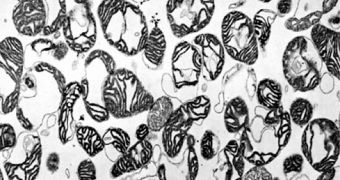In the mid-1990s, police investigators and forensics experts added a new tool to their inventory of methods for analyzing biological samples. They began running mitochondrial DNA comparison tests, under the assumption that each type of cell in the same individual would have the same type of genetic material in these structures. Now, experts at the Johns Hopkins University (JHU) are saying that the method may have its flaws, and are calling into question details of it, in a new paper, Wired reports.
Each living cell in the world has a large number of organelles inside, called mitochondria, which are also referred to as cellular power plants. What they do is convert glucose into energy, providing us and every other animal with the ability to perform basic functions necessary for life, such as breath and walk. Inside mitochondria, the genetic material is separate from the one in the rest of the cells. In other words, each of us has two types of DNA inside – our personal one, in cellular nuclei, and the mitochondrial one. What forensic experts did about 15 years ago was find a way of comparing the latter, rather than the former, on account of it degrading less over a long period of time.
What the JHU team shows in its new paper is the fact that mitochondrial DNA samples – collected form various types of tissue in the same individual – do not match each other. The research group used the latest in gene-sequencing technology on genetic material collected from nine distinct organs of two volunteers. It was revealed that the samples did not necessarily match each other, even when collected from the same individual. “I wouldn’t say that it throws other results out the window, but it does throw a curve ball,” says JHU geneticist Nickolas Papadopoulos, who is also a coauthor of the investigation. The study appears in the March 4 issue of the esteemed publication Nature.
“This requires more study, but it could put a damper on how things have been interpreted to this point,” the expert adds. Others in the forensic community acknowledge the new results, but also call for more investigations into the matter. The associate director of the University of North Texas Health Science Center DNA Identity Laboratory, John Planz, says for instance that previous studies which showed such variations were usually conducted inappropriately. He argues that errors in measurement and analysis most often led to this conclusion, and presses that more teams take an active interest in this issue.

 14 DAY TRIAL //
14 DAY TRIAL //